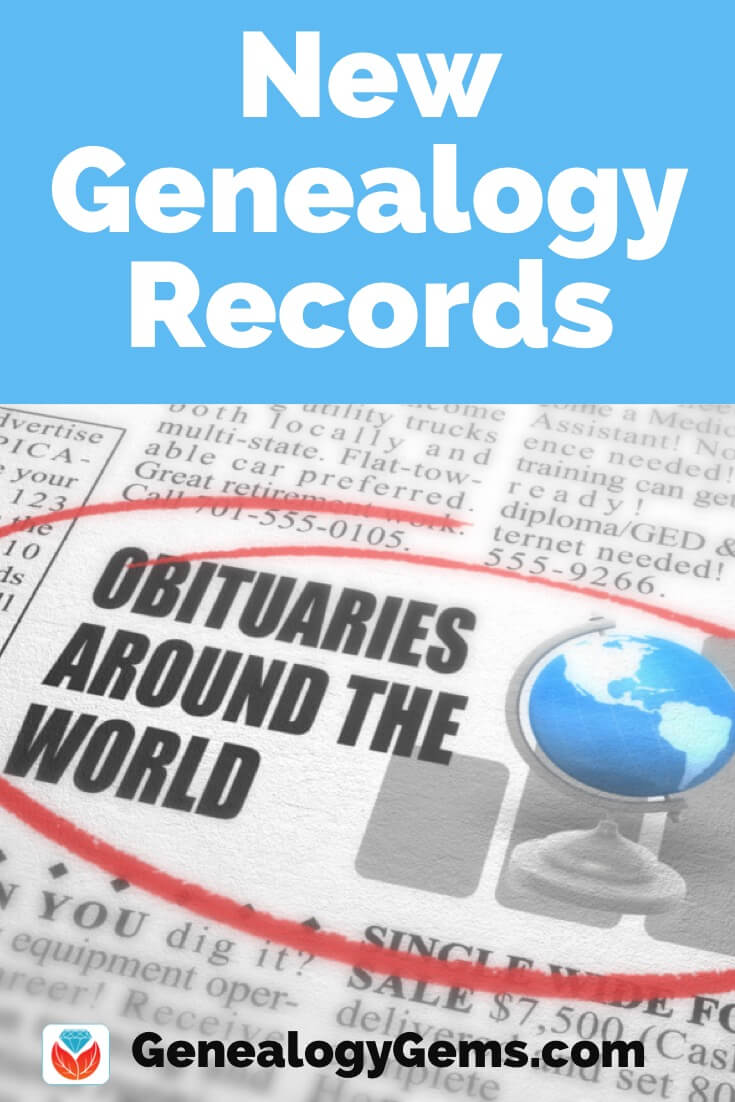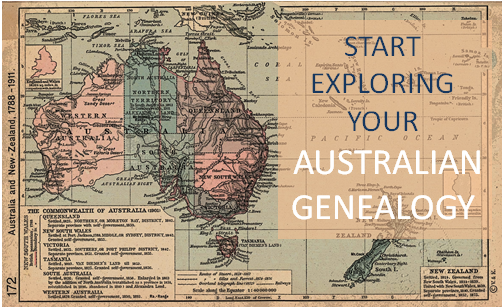Blog


Massive Italian Records Collection Announced
A major announcement from FamilySearch this week, launching the release of over 150 million Italian historical genealogical records online. Search now and learn about how you can help index. Also new this week: the 1901 Ireland Census, a beautiful image collection for Nottingham, England, and millions of newspapers for the United States.
150+ Million Italian Records Now at FamilySearch
FamilySearch International has just announced free access to over 150 million Italian historical genealogical records—the largest online collection of its kind. From their press release: “The unprecedented initiative is the result of collaboration between FamilySearch, the Italian government, the Italian State Archives (Direzione Generale per gli Archivi or DGA), and many other archives. The free collections include over 200 years of digitized images of birth, marriage, death, and other significant family history records from all regions of Italy and many other repositories.”
Click here to start searching the Italian collection now.
FamilySearch says that they will finish digitizing all of the civil records of all Italian provinces in 2019, but efforts are still underway to index them all. They will remain available as images to view online for free, but indexing will make them fully searchable for anyone looking for their Italian ancestors. Volunteers from around the world are helping, and you can, too! To help index historical Italian records, go to FamilySearch.org/Indexing.
Ireland 1901 Census
Also new at FamilySearch is the Ireland 1901 Census collection. Nearly 3.5 million records comprise this new collection. This is one of the two full censuses for Ireland. On “Form A” of the census is where personal information was captured. Everyone present in the house during the visit was counted. This included residents, visitors, boarders, servants, and anyone else who slept at that house on Sunday, March 31, 1901. The census returns contain: name, age, occupation, relationship to the head of household, marital status, education/literacy, religion, birth country, and other information. The index was created by the National Archives of Ireland.
Nottingham, England
A new website hosting thousands of Nottingham photographs will be launched from 1 November 2018, one hundred years after the city’s photographic collection was established. Picture Nottingham includes some of the oldest Nottingham photographs from the 1850s, taken by Samuel Bourne, as well as many local pictures, engravings and sketches dating from the 1700s onwards. If your ancestor lived in the Nottingham area, these photos are a wonderful glimpse into their daily lives.
And they’re still expanding! Library staff stated, “Here at Nottingham Local Studies Library, we continue to collect photographs – if you have images which you wish to donate to our collection you can do so on Picture Nottingham. We especially welcome photographs of views of local areas showing buildings, people, customs, activities and industry, both past and present.”
Visit the Picture Nottingham website to browse photos, learn more, and even order framed prints.
U.S. Newspapers at MyHeritage
Over at MyHeritage.com, millions of newspapers throughout the U.S. are now available to search:
- Alabama Newspapers, 1870-2009 – 2.2 million
- Arizona Newspapers, 1866-2009 – 870,000
- California Newspapers, 1847-2009 – 2.1 million
- Georgia Newspapers, 1881-2009 – 2.1 million
- Idaho Newspapers, 1894-2009 – 680,000
- Iowa Newspapers, 1837-2009 – 1 million
- Michigan Newspapers, 1817-2009 – 1.1 million
- Missouri Newspapers, 1845-2009 – 2 million
- North Carolina Newspapers, 1852-2009 – 2.7 million
- Oregon Newspapers, 1867-2009 – 1.5 million
- South Carolina Newspapers, 1787-2009 – 1.9 million
- Utah Newspapers, 1850-2003 – 1.1 million
- Virginia Newspapers, 1792-2008 – 870,000
- Washington Newspapers, 1855-2009 – 3.6 million

Free class on newspapers at MyHeritage
Lisa recently presented at the first ever MyHeritage LIVE User Conference in Oslo, Norway, where she taught genealogists from around the world how to tap into newspapers using MyHeritage SuperSearchTM. You can watch the recording of her presentation for free at the MyHeritage Facebook page. Click here and jump to about 40 minutes. And while you’re there, feel free to watch and enjoy all of the presentations from the 2-day conference, including both the genealogy and DNA tracks.

Lacey Cooke
Lacey has been working with Genealogy Gems since the company’s inception in 2007. Now, as the full-time manager of Genealogy Gems, she creates the free weekly newsletter, writes blogs, coordinates live events, and collaborates on new product development. No stranger to working with dead people, Lacey holds a degree in Forensic Anthropology, and is passionate about criminal justice and investigative techniques. She is the proud dog mom of Renly the corgi.
Disclosure: This article contains affiliate links and Genealogy Gems will be compensated if you make a purchase after clicking on these links (at no additional cost to you). Thank you for supporting Genealogy Gems!

Genealogy Gems Podcast Part of Pandora’s Major Podcast Launch

Pandora is now poised for podcast delivery!
Podcasts have always faced an obstacle: it just hasn’t been that easy to find them or listen.
After I launched The Genealogy Gems Podcast in early 2007, I spent most of my time trying to explain to potential listeners how to “subscribe” to the show. Along came the smartphone, and eventually podcast apps, and things got a little easier. In 2010 we launched our own Genealogy Gems Podcast app in hopes of improving the listener experience even more. That’s great for those tenacious enough to find us in the first place, but what about everybody else? Also though podcasts have experienced a huge surge in popularity thanks to the viral Serial podcast, 83% of Americans still aren’t listening on a weekly basis.
Pandora, the largest streaming music provider entered the game today and plans to change all that. And thanks to you, our loyal listeners, The Genealogy Gems Podcast has been selected by Pandora as part of their initial offering of podcasts!
Read below how this music giant is going to tap technology and human curation to recommend podcasts to those who are sure to love them. I’m sure that once Americans discover through Pandora that their family history is just waiting to be discovered, and that The Genealogy Gems Podcast is here to help them do just that, we’ll be welcoming many new listeners. Keep reading for all the details from Pandora. And, be sure to sign up for the early access offering here. You can expect to start seeing our show on Pandora sometime in December.
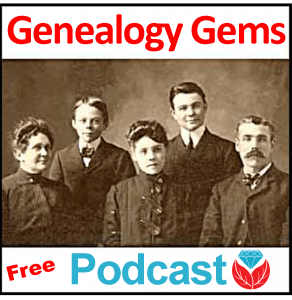
Thanks for listening friend!
Lisa Louise Cooke
PRESS RELEASE
OAKLAND, Calif.–(BUSINESS WIRE)–Pandora (NYSE:P), the largest streaming music provider in the U.S., today unveiled its podcast offering, powered by the Podcast Genome Project, a cataloging system and discovery algorithm that uses a combination of technology and human curation to deliver personalized content recommendations. Beginning today, Pandora will roll out beta access to select listeners on mobile devices. Those interested in early access to the offering can sign-up here, with general availability in the coming weeks.
“It might feel like podcasts are ubiquitous, but, eighty-three percent of Americans aren’t yet listening to podcasts on a weekly basis, and a majority of them report that’s because they simply don’t know where to start,” said Roger Lynch, Chief Executive Officer, Pandora. “Making podcasts – both individual episodes and series – easy to discover and simple to experience is how we plan to greatly grow podcast listening while simultaneously creating new and more sustainable ways to monetize them.”
Similar to how its namesake the Music Genome Project has helped Pandora become the best and easiest way to discover music online since 2005, the Podcast Genome Project recommends the right podcasts to the right listeners at the right time, solving the questions, “is there a podcast that’s right for me?” and “what should I listen to next?” It evaluates content based on more than 1500 attributes – spanning MPAA ratings, timely and evergreen topics, production style, content type, host profile, etc – and listener signals including thumbs, skips and replays. It also utilizes machine learning algorithms, natural language processing, and collaborative filtering methods for listener preferences. And, similar to the Music Genome Project, the Podcast Genome Project combines these techniques with our expert in-house curation team to offer episode-level podcast recommendations that reflect who you are today and evolve with you tomorrow.
“With the introduction of podcasts, listeners can now easily enjoy all of their audio interests – music, comedy, news, sports, or politics – on Pandora, the streaming service that knows their individual listening habits the best,” said Chris Phillips, Chief Product Officer, Pandora. “The Podcast Genome Project’s unique episode-level understanding of content knows exactly what podcast you’ll want to discover next, and will serve it up through a seamless in-product experience that is uniquely personalized to each listener and will continue to grow with their tastes over time.”
At launch, Pandora has partnered with top-tier publishers including APM, Gimlet, HeadGum, Libsyn, Maximum Fun, NPR, Parcast, PRX+PRI, reVolver, Slate, The New York Times, The Ramsey Network, The Ringer, WNYC Studios, and Wondery, and will continue to feature existing podcast content including Serial, This American Life and Pandora’s original Questlove Supreme, with many more to come in the future. These partnerships introduce hundreds of popular podcasts across a wide variety of genres including News, Sports, Comedy, Music, Business, Technology, Entertainment, True Crime, Kids, Health and Science, offering inspiring audio experiences for a variety of diverse interests.
ABOUT PANDORA
Pandora is the world’s most powerful music discovery platform – a place where artists find their fans and listeners find music they love. We are driven by a single purpose: unleashing the infinite power of music by connecting artists and fans, whether through earbuds, car speakers, live on stage or anywhere fans want to experience it. Our team of highly trained musicologists analyze hundreds of attributes for each recording which powers our proprietary Music Genome Project®, delivering billions of hours of personalized music tailored to the tastes of each music listener, full of discovery, making artist/fan connections at unprecedented scale. Founded by musicians, Pandora empowers artists with valuable data and tools to help grow their careers and connect with their fans.
www.pandora.com| @pandoramusic | www.pandoraforbrands.com | @PandoraBrands | amp.pandora.com
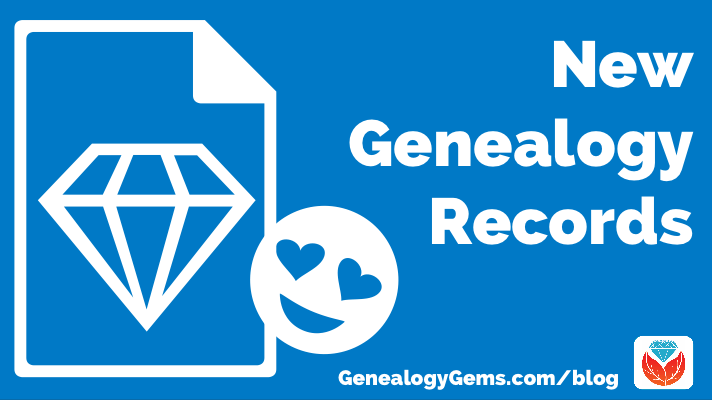
New Genealogy Records Online: WWI U.S. Records & More
Three new WWI U.S. records collections are available online now for free at FamilySearch! You’ll find census records for nurses in Connecticut, as well as Delaware servicemen records and navy card rosters for Florida. Also new this week are military and census records for France, and school records for Australia.
Featured: U.S. World War I Records
Three new World War I collections for the United States are available now at FamilySearch.org for free.
Connecticut, World War I, Military Census of Nurses, 1917 – This small collection of about 5,500 records includes the “military census of nurses for the year 1917 in Connecticut. Pages may appear to be missing, but this is not necessarily true because many pages were attached to other pages of the same name but in a different area within this same group of records. A general index for this census’ codes is found in the first few images of each film.”
Delaware, World War I Servicemen Records, 1917-1919 – About 3,000 records are available for this collection. Digital images of the originals are held by the Delaware Public Archives in Dover, Delaware.
Florida, World War I Navy card roster, 1917-1920 – Explore nearly 6,000 records in this index and images of a card roster of Floridians that served in the United States Navy during the First World War.
France Military & Census Records
Also new at FamilySearch are military records for France, Rhône, Military Registration Cards, 1865-1932. You can search through this database of 40,000 indexed records of military draft cards for men born between 1865-1932. “Each record contains information about the solider such as name, birthplace, residence, occupation, parents’ names and their residence, a physical description of the soldier, military curriculum, and details about wounds.”
If your ancestors lived in western France, you’ll want to take a look at the France, Vienne, Census, 1896 collection at FamilySearch. Over 365,000 records are available to search online now for free. This collection may be able to tell you your ancestor’s surname, age, estimated birth year, province, marital status, and relationship to the Head of Household.
Queesland, Australia School Records
Over at MyHeritage, you can now explore the Queensland School Pupils Index, Part 5. According to the collection description, this collection contains “names of pupils from 171 schools in Queensland, Australia. Dates range from 1866 to 2003. Schools range from large city ones with admissions in the thousands to country one-teacher schools with a total enrolment of hundreds. Some schools have long ceased to exist; others are still functioning.” There are nearly half a million records included in this collection.
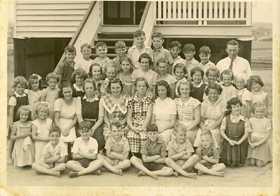
Image courtesy of Findmypast
If you haven’t already, you can also check out the other collections in this series: Queensland School Pupils Index Part 1, Part 2, Part 3, and Part 4. These four collections contain “names of pupils from 331 schools in Queensland, Australia. Dates range from 1870 to 1993 with a30-year closure, as recommended by Education Queensland, when names were extracted directly from Admission Registers. Schools range from large city ones with admissions in the thousands to country one-teacher schools with a total enrolment of hundreds. Some schools have long ceased to exist; others are still functioning.”
If you’re a Findmypast user, you can also access Parts 1-4 at Findmypast.
Learn more about Australian records
Ready to start your Australian genealogy research? Check out our free article, courtesy of Legacy Tree Genealogists. Learn all about essential Australian history, geography, genealogical record types and online resources to trace your family tree “down under.” Click here to read.

Lacey Cooke
Lacey has been working with Genealogy Gems since the company’s inception in 2007. Now, as the full-time manager of Genealogy Gems, she creates the free weekly newsletter, writes blogs, coordinates live events, and collaborates on new product development. No stranger to working with dead people, Lacey holds a degree in Forensic Anthropology, and is passionate about criminal justice and investigative techniques. She is the proud dog mom of Renly the corgi.
Disclosure: This article contains affiliate links and Genealogy Gems will be compensated if you make a purchase after clicking on these links (at no additional cost to you). Thank you for supporting Genealogy Gems!



